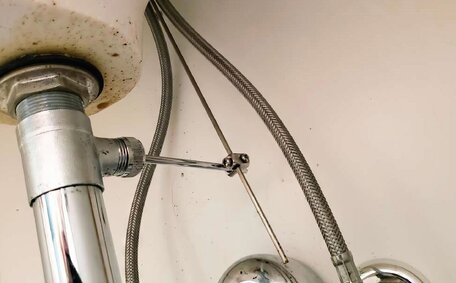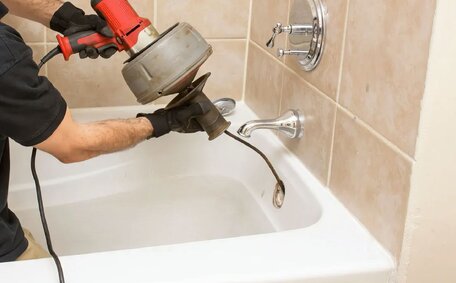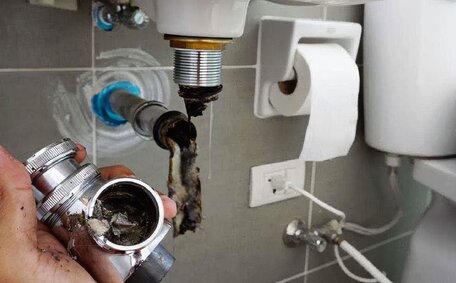Understanding Gas Shut-Off Valves and Why They Are Important
Understanding the function and location of your gas shutoff valve is essential in any household with gas appliances, playing a pivotal role in emergency situations.
Situated before the gas meter or tank, these valves allow you to manually cease the flow of gas, for both emergency situations and routine maintenance.
In case of emergencies like gas leaks, explosions, natural disasters, or fires, promptly turning off the gas can avert disasters. If you detect a gas odour or suspect a leak, isolating the gas supply is vital while seeking professional repair services.
This action prevents gas from fuelling potential fires and stops it from accumulating to dangerous concentrations.
Australian law mandates that all residential and commercial properties have an easily accessible and operational gas safety shutoff valve. Typically, it’s affixed to the inlet gas pipe on the external wall of your home, close to the gas meter for convenience. The main shutoff valve, usually located within the meter box, will commonly be marked and have a square or rectangular nub you can manually rotate a quarter-turn to stop the flow of gas in an event of an emergency.
as a homeowner, ensure you know where your main shutoff valve is and regularly examine it to ensure you can shut off your gas precisely. Ensure it is unblocked and that you have easy access in a crisis – it’s safe do so confidently.
Locating the Gas Meter Outside Your Home
When locating your external gas meter, it’s most often found on the outside wall that aligns with your gas appliances, such as the hot water system or stove. The incoming gas meter is typically positioned near ground level for easy access, crucial if it’s connected to your gas water heater.
So if your kitchen, gas hot water system, and heater are on one side of your home, this is where you would expect to find the gas meter.
You can visually identify gas meters by the glass-domed gauge that connects to the inlet and outlet pipes. The gas shut-off valve is operated by a handle or a flat steel lever that you rotate 90 degrees. Being aware of your gas shutoff valve’s location can save valuable time during an emergency.
For visibility, components of your gas infrastructure, including the shutoff valve, are often painted bright yellow.
Identifying the Main Gas Shut-Off Valve
The gas main shutoff valve is the fundamental valve positioned on the incoming gas line entering a home or edifice. Its purpose is to enable the manual interruption of the gas supply during emergencies or maintenance, a crucial safety measure.
Clear identification and labelling of the main valve ensure its easy access when an immediate shut off is necessary.
The external main shutoff valves are typically installed on the house wall nearest to the gas meter, ready for quick action in case of emergencies. The valve itself, often one among several, is a metallic tap handle or spigot attached directly to the meter pipe. Most of these valves are labelled 'gas shut off’ and feature an arrow to indicate the off position.
These valves are strategically installed right before the point where gas enters the building.
To Turn your gas off, you simply turn the spigot handle a quarter turn until it is crosswise to the pipe (perpendicular). Executing this halts the gas flow through the main line, effectively cutting off the gas supply to all internal appliances. Ensure that it is readily accessible, identifiable, and consistently checked for all your water and gas meter gas termination.
How to Safely Turn Off the Gas
To shut down your gas supply with the main valve is a crucial safety step if you suspect a leak, are conducting maintenance, or if an emergency arises. Ensure you remain vigilant of hazards and take sure your precautions first.
- Should you detect the odour of gas, vacate the area instantly, contact your gas service provider on 000, then search for support from a licensed gas professional. Avoid activating any electronics or light switches, and do not use your phone in proximity to the leak where a naked flame could spell danger.
- Once at a safe distance, call the gas leak hotline at gas leak 1800 427 1800 to report the issue if it is significant and seek support from a licensed gasfitter.
- Determine where your main shutoff valve located, commonly near the gas meter on the pipe inlet. This will be marked and possess a safety water gas shutoff valve lever to twist.
- Use an adjustable wrench to give the valve handle a 1/4 turn until it is crosswise to the pipe, cutting off all gas flow. This action stops your home’s gas from entering the property’s supply ducts, effectively helping turn off all supply.
- switch off essential utilities and your appliances pilot lights as an extra safety step once the main gas cut-off is executed.
- Do not engage your gas supply until all leaks are mended and scrutinised by a professional who’s turned off such problems before.
By following these safety steps, your licensed expert can shut off the gas in your home. Never try to find or when has gas been used yourself - evacuate and get professional assistance.
When Should You Attempt Shutting Off Gas Yourself
There are limited situations when it is appropriate for a homeowner to shut off your gas supply themselves. This should only be attempted if you have working knowledge of your portable gas system, the leak is minor and you can safely access the external shut-off valve.
You may cut off your gas if you detect a faint gas smell emanating from an appliance or piping within your dwelling. Post evacuation and aeration, if the scent persists, it may indicate a minor internal breach that shuts off intervention.
If you are acquainted with your system, switching off the main open gas valve outside can isolate the leak until repairs are performed by a licensed gas fitter.
Similarly, if outdoor gas leaks are detected adjacent to the appliance or meter inlet pipes, sealing the main valve can avert build-up before gas signs escalate. This hangs on the prerequisite of clear passage unobstructed by ignition sources, lighter than air gas your area free from pooling and the course of the wind not ferrying gas. Personal safety must come first before attempting shut off.
When to Call a Professional Instead
There are critical situations that require contacting a licenced professional gas fitter rather than attempting to shut off gas yourself:
- You smell gas but are unable to determine the source or safely access your external gas valve
- There are multiple gas leaks inside the home from damaged appliances or pipework
- Any gas leaks are large, hissing and have visibly accumulated gas
- The leaks are from gas lines beneath concrete or underground external pipes
- Any suspected carbon monoxide leaks or gas appliance issues
- The gas metre, pipes or valves have sustained earthquake, fire or flood damage
- You lack knowledge about safely turning off main gas supply to your property
Our fully licensed technicians at Sans Souci Plumbing are gas fitting experts available 24/7 when emergency gas leak response is needed. For prompt aid shutting off gas or mending defective appliances, discover more about our services on our website by getting in touch with our emergency hotline on 1300 349 338. ensure your family and everyone evacuates the property and call 000 for a fire emergency or medical emergencies.
What to Do After You Have Shut Off the Gas
After safely shutting off the main your home gas supply, there are important next steps to take:
- Continue airing the space by opening all doors and windows to ventilate and ensure thorough air circulation. This dissipates any residual gas.
- Do not turn any electrical devices or appliances on or off. Eliminate ignition sources.
- Relocate individuals and move away affected if you still smell gas or rest uneasy about potential leaks. Get to a safe distance before calling emergency services.
- Get in touch with your gas company or certified expert. Do not attempt to turn supply back on until fully inspected by your gas supplier.
- Warn others not to enter the property until it is assessed as gas-safe by technicians.
Even with main supply shut off, always put safety first. Do not search for leak sources yourself and make sure to hire reputable professionals licenced to work on gas systems before reintroducing gas to your home.
How to Turn the Gas Back On and Relight Appliances
After shutting off gas due to an emergency, leaks or maintenance, turning supply back on again requires care and safety checks. Follow these steps before relighting appliances:
- Confirm with your type gas provider or professional that the gas system was inspected and safe to turn back on. Get written approval.
- Head over to where gas main external shut off valve is situated. Use an adjustable wrench to turn the handle a 1/4 turn to realign it with the pipe. This restores gas flow.
- Slowly turn on each appliance’s individual gas shut-off valve if equipped, especially those with pilot lights. for pilot light devices, consult manuals or refer to our guidance for correct reignition procedures.
- Examine all connections, fixtures, and piping for leak indications with check your gas leak detection spray or soapy water. Ensure no bubbling occurs.
- If seepages are discovered, promptly re-seal the main gas valve and you can also dial a licenced professional for repair support.
Never attempt to turn gas back on until certified safe by a qualified technician. Improper procedures can allow dangerous gas accumulation or ignition risks. For leak emergency response and repairs call our 24/7 hotline on 1300 349 338.






